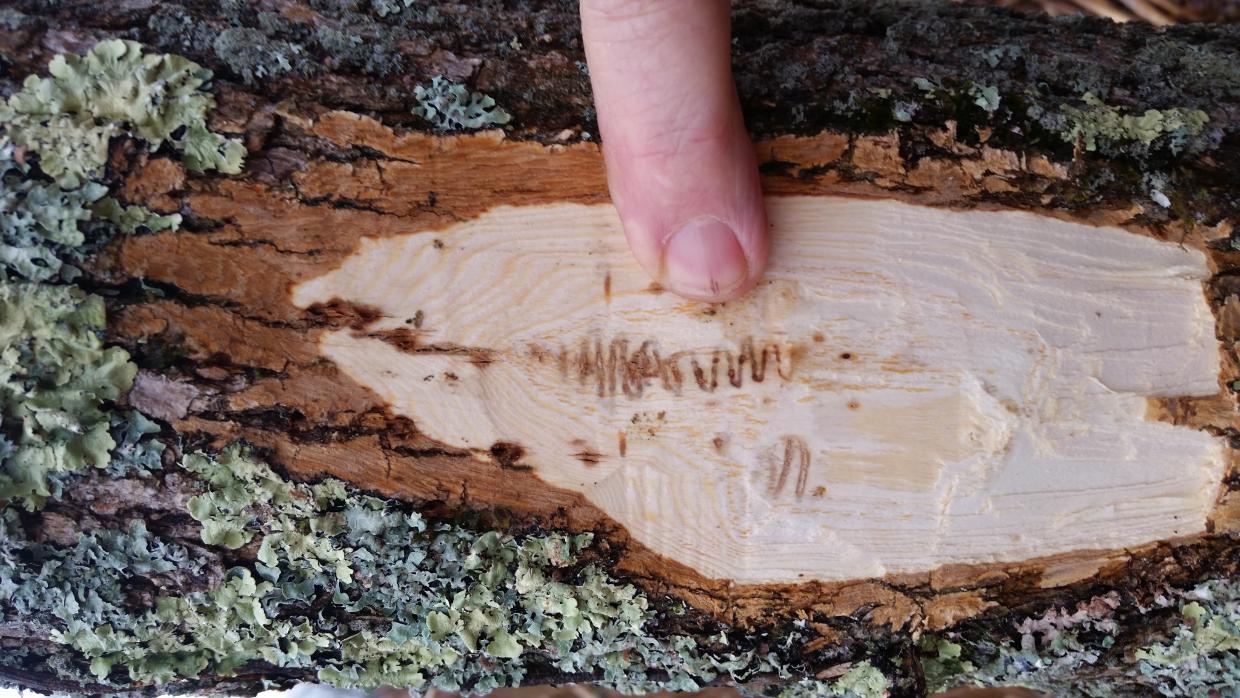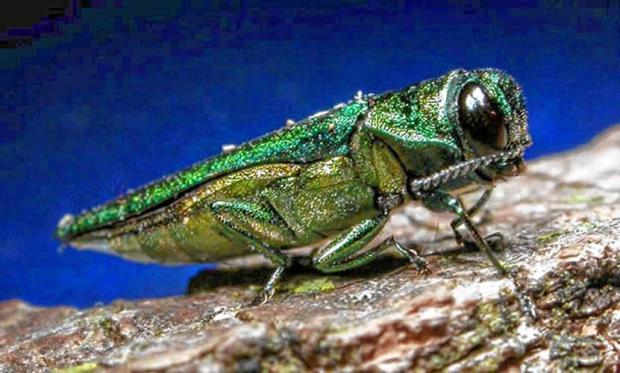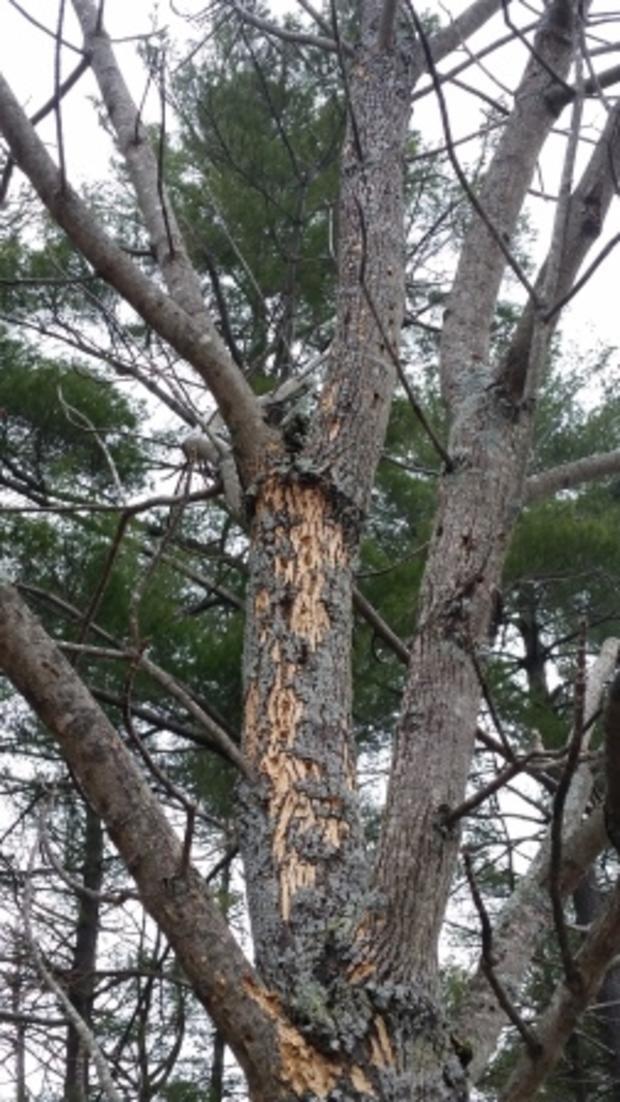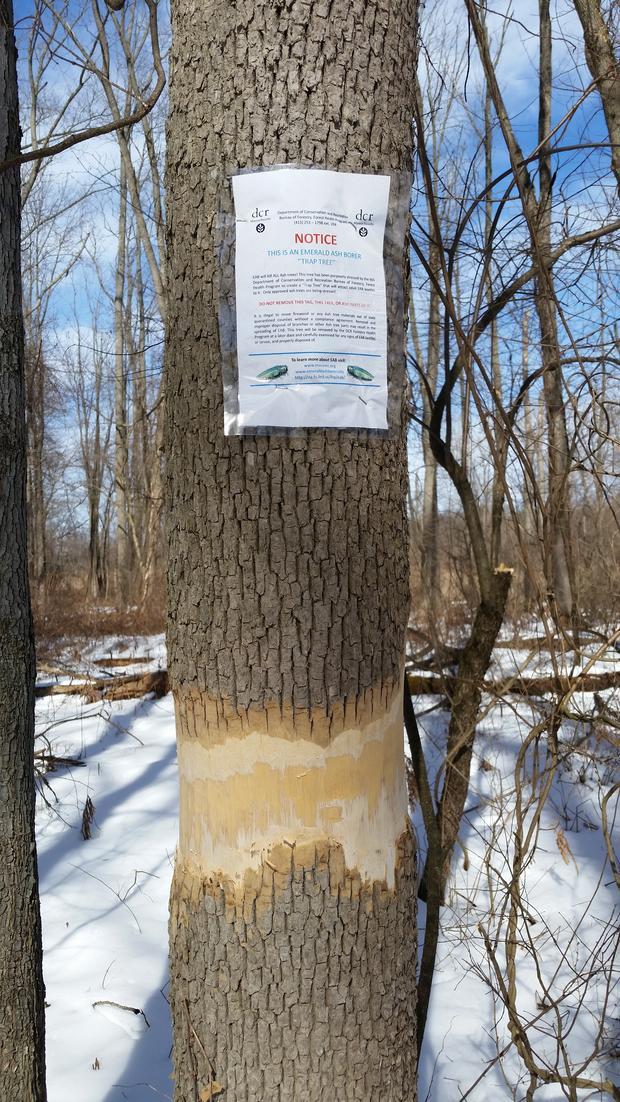The emerald ash borer was introduced to the United States in the late 1990’s and has steadily spread and expanded its range. The invasive pest was first detected in Massachusetts in 2012 in the town of Dalton. Since its initial find, the emerald ash borer has been detected in eleven counties: Berkshire, Bristol, Essex, Franklin, Hampden, Hampshire, Middlesex, Norfolk, Plymouth, Suffolk, and Worcester. The entire state of Massachusetts is currently part of the national quarantined zone, limiting the movement of all hardwood firewood, and green wood products, nursery stock, and any plant materials from any ash species in an effort to stop the spread of the beetle.
The Emerald Ash Borer (EAB) is a small, invasive beetle that is devastating to all ash tree species in MA. It is currently present in eleven MA counties and continues to spread.




